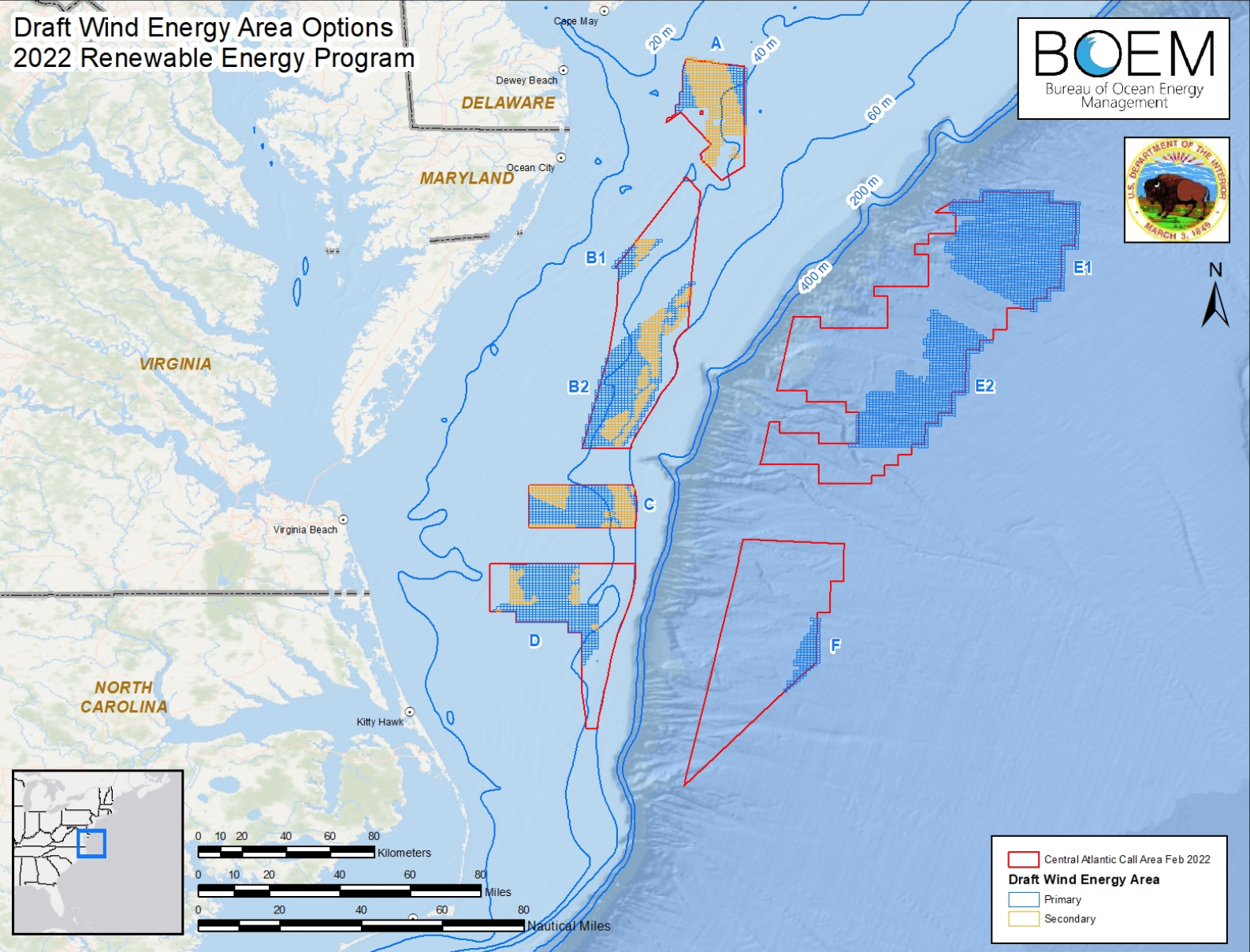Eight proposed wind energy areas off the U.S. central Atlantic coast announced Wednesday total about 1.7 million acres, reduced from 3.9 million in the original call area outlined by the Bureau of Offshore Energy Management.
Ranging in distance 19 to 77 miles from the coasts of Delaware, Maryland, Virginia and North Carolina, the WEAs could be the first to venture to the edge of the East Coast outer continental shelf – potentially requiring use of floating turbines, if wind choose to bid on the most distant, deepest areas.
BOEM officials say they have been gathering information since the call area was released in April, from sources including the Central Atlantic Intergovernmental Renewable Energy Task Force; other federal agencies and the four states; and input from Delaware, Maryland, Virginia and North Carolina State agencies; input from Federal agencies; and “comments from stakeholders and ocean users, including the maritime community, offshore wind developers, and the commercial fishing industry.”
Fishermen and other ocean users have been asking BOEM “to increase the transparency” in how wind energy areas are selected, the agency acknowledges. To meet that call BOEM planners say they are adapting an existing ocean planning model that’s already being used in the Gulf of Mexico.
Consultations with the Gulf shrimp fishing industry led BOEM to exclude the most productive fishing areas from future leasing areas off Galveston, Texas, and Lake Charles, La. That experience and other ongoing studies, to make sure traditional fisheries can co-exist with new aquaculture in the Gulf region, have convinced BOEM planners to take a similar approach in thinking about offshore wind in other regions.
“We thought it was really good idea to work with BOEM on a similar process,” said Michael Celata, BOEM’s Gulf of Mexico regional director, in a meeting Oct. 3 with the Business Network for Offshore Wind’s Gulf working group.
The Southern Shrimp Alliance raised its industry’s concerns in summer 2021, all like the objections that have come up on the Atlantic coast: Displacement of fishermen from traditional fishing grounds and shoreside support infrastructure, damage to fishing gear and safety hazards from wind turbine arrays, and environmental effects on marine life.
The Southern Shrimp Alliance identified “high to moderate” areas of fishing activity, helping BOEM to exclude those blocks from leasing. Originally planners had tracking data for shrimp fishing trips for 2009 to 2019, but in discussions with the Southern Shrimp Alliance agreed 2015 to 2019 electronic logbook data was more comprehensive.
The shrimpers suggested adapting the planning model in use for the National Oceanic and Atmospheric Administration’s Aquaculture Opportunity Area Atlases. A modified version is now being used for the central Atlantic wind areas.
BOEM says the central Atlantic areas could be reduced further during that process and further public comment processes. Along with commercial fishing and marine habitat issues, other potential conflicts are military use of the central Atlantic waters and airspace, a potential U.S. Coast Guard (USCG) safety fairway for vessels, and a NASA danger zone downrange from its Wallops Island, Va., launch facility.
The Nov. 16 announcement started a 30-day public comment period. Virtual meetings are planned for Nov. 30 at 12:30 p.m. Eastern and interested parties can register online for BOEM's meeting with fishing community and related interests; the second Dec. 1 at 1:30 p.m. is open for registering for BOEM's meeting with environmental organizations.







